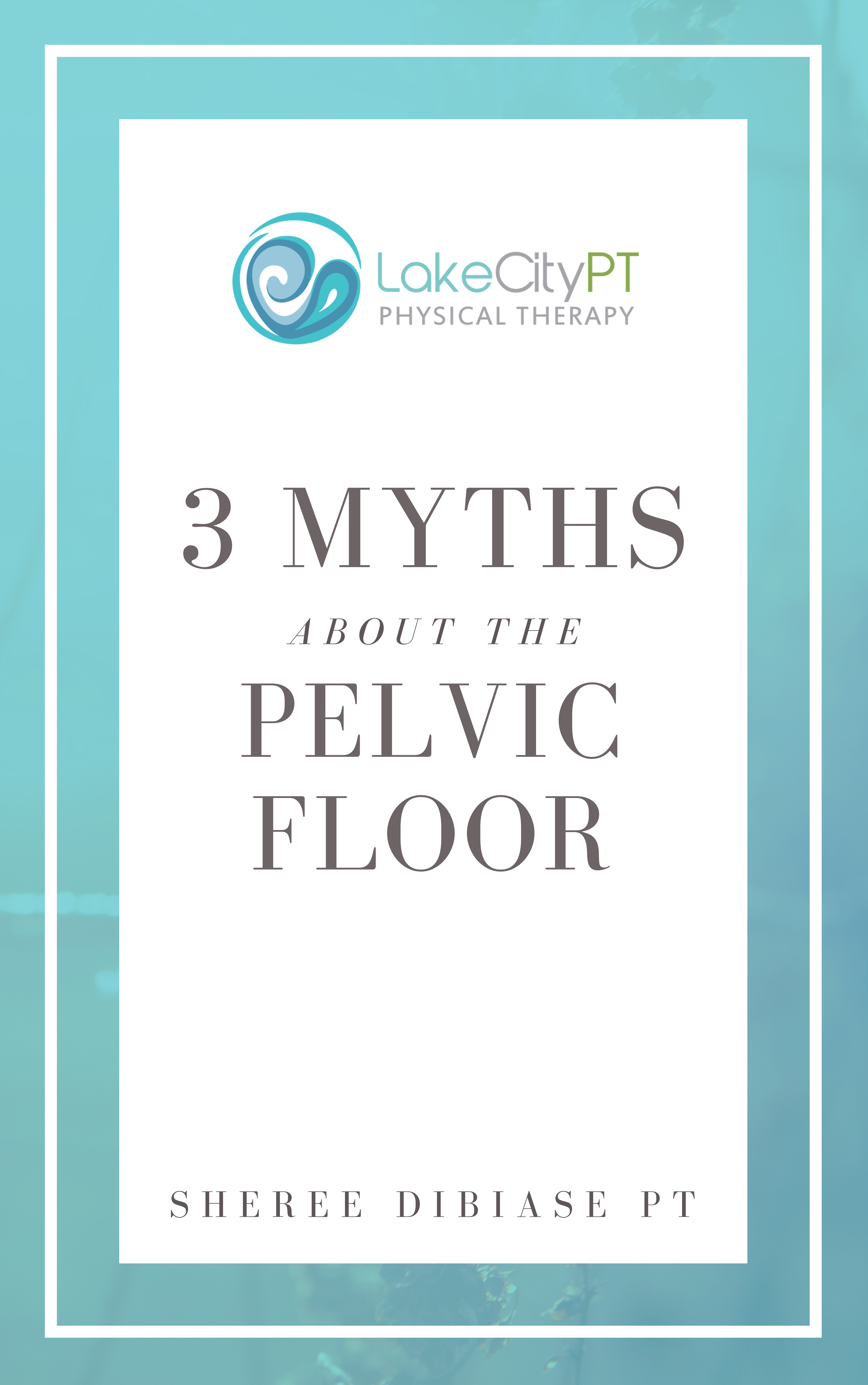Moms Returning To The Gym
This past week alone I’ve seen multiple women in my private outpatient physical therapy practice, Lake City Physical Therapy, with Pelvic Organ Prolapses (POP) . I know it seems difficult to imagine, but’s this can happen at all stages of our lives.
Any woman who has ever delivered a baby, whether by vaginal or C-section delivery, has the potential risk, at some time or another, of having a POP.
Who Can Get A Pelvic Organ Prolapses
No matter if you are a new Mom, or a Mom of 4 small children, or a grandmother of lots of grandchildren, you need to know this could occur. Research indicates this can occur through the natural labor and delivery process, with a higher prevalence for those with vaginal deliveries, multiple births and any trauma, which may or may not include forceps or vacuum assisted delivery. That being said it is the resulting symptoms that can occur immediately or over the course of years that are what we are concerned with in pelvic health.
How Do Pelvic Organ Prolapse Happen
A Pelvic Organ Prolapse (POP) can occur when there are changes in the muscles and connective tissue structures which supports the internal organs of the pelvis, allowing the internal organs of the pelvis to descend out of their normal position. These internal organs are the bladder, vagina, uterus and bowels. Often my patients describe a feeling heaviness or pressure in the floor. Quite frequently they say they feel a bulge or fullness in the floor and they can see something there, that they couldn’t see before.
According to the American College of Obstetricians and Gynecologists prolapses are described by the organ and tissue that has changed in the floors alignment. You can see example videos of this by going on their website www.acog.org. A cystocele is the bladder falling into the vaginal vault. A rectocele is when the rectum drops forward and down into the vaginal canal.
What Is A Uterine Prolapse
A uterine prolapse is when the uterus drops down into the vaginal canal. A uterovaginal prolapse occurs when both the uterus and vaginal tissue begin to fall. A urethrocele is when the urethral tube from the bladder begins to fall into the vaginal region. A vaginal vault prolapse can occur when the vaginal tissue begins to fall out and this often causes the bladder and rectum to come with it.
The severity of a prolapse is determined by how far the tissue has descended and how close it is to the hymen near the vaginal opening. Grade 0 is no change. Grade I is a mild prolapse and the tissue is greater than 1 cm from the hymen, vaginal opening. Grade II is within 1 cm of hymen, vaginal opening and a Grade III and Grade IV means the tissue has descended below the hymen, vaginal opening area. Please do not be alarmed when you examine yourself. The prevalence of this postpartum is to be expected and you will not be examined by your MD generally till 6 weeks after labor and delivery. These tissues take time to heal and they must be given adequate time postpartum, especially if you are nursing. It is the symptoms post 6 weeks we are most concerned with in the pelvic health arena, if they persist with no improvement, they can become a long-term health issue.
How To Identify A Pelvic Organ Prolapse
If you have a prolapse, it does not mean you will have symptoms, but it does mean you should have the understanding and know the necessary interventions that should be done for the pelvic floor muscles and their corresponding connective tissue, to prevent further disruption, whether for exercising at the gym or another pregnancy.
If you have symptoms then you definitely need intervention. Symptoms may include pelvic,low back or hip pain at rest or with activity, urinary frequency greater than every 2-4 hours, urge with urinary leakage before you get to the bathroom, stress incontinence, with coughing, sneezing, laughing, bowel disruption, whether leaking or constipation, pain upon sexual intercourse, immediately or that lasts for 2-3 days.
Please do not assume if you have this symptoms you have a prolapse. You may have an overactive pelvic floor which leads to myalgia which can occur in any of our athletes and our moms returning to the gym without proper instruction on pelvic floor contract relax integration.
Here is where good abdominal and pelvic floor function needs to be addressed. An overactive external oblique abdominal muscle can cause a downward pressure to the floor making a POP worse or other of the above listed symptoms. Many of our elite and high functioning athletes, women and men alike, have an overactive pelvic floor.
Moms, here are the key points you should be able to demonstrate before returning to the gym or any work out regime no matter your age:
1) How to do a full pelvic floor contraction-(please note it is not a traditional Kegel and please do not stop and start the flow of urine why you are voiding as it confuses the biofeedback loop of the bladder) the pelvic floor muscles are shaped like a diamond- close all the openings in the pelvic floor and then lift the diamond upwards.
Knowing how much muscle tone the floor needs with walking vs lifting loads ie baby or weights via the gym is important. These muscles also need the ability to fire quickly as well,due to 30% of them being fast-twitch muscle fibers. With quick heavy loads at the gym they need to be trained to do this work, so no lift voiding occurs.
2) How to integrate your breathing mechanism into assisting the pelvic floors to contract. “Blow” before you go with any and all loads, as exhalation aids in floor contraction and function. No bearing down with lifting weight loads, as this pressures pelvic organs inferiorly and can make a mild prolapse worse.
3) How to turn on all you Core muscles so they integrate appropriately. Your abdominal muscles are a powerful tool in lifting the pelvic floor during its contraction but they must be used in the right order to provide lift and protection of the floor esp with weight lifting. It’s like listening to great music, it only sounds wonderful if everyone is playing in the right order.
4) How to use aerobic exercise to increases pelvic floor health. A recent study indicated that daily walking increased blood flow to the floor and was successful at decreasing symptoms of pelvic floor dysfunction.
Please before you return to the gym or to your workout regime, know your own body. If you are having any of the above symptoms, or you are symptom free but not sure with your current workout you are progressing as you should be, please see your MD, OB/GYN for an exam and your pelvic health physical therapist to have a musculoskeletal evaluation for education, training and correct integration of core health. You only get one body, please take care of it, it’s a powerful gift.

